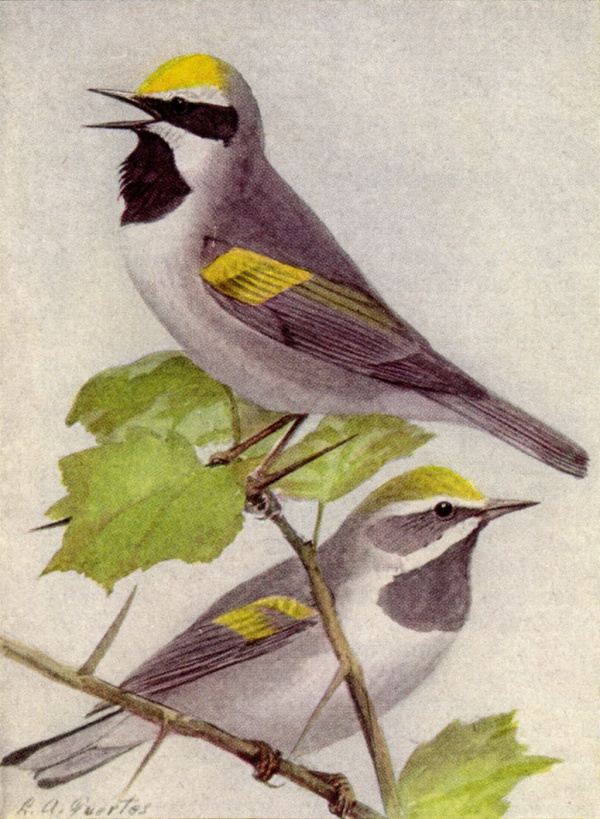Facts About Golden-winged warbler
The golden-winged warbler is a charming, diminutive bird native to North America. They breed in southeastern and south-central Canada and the Appalachian Mountains in the northeastern to north-central United States. A significant number of these birds can be found in Wisconsin, Minnesota, and Manitoba. Although they are gradually expanding northwards, their population is declining due to habitat loss and competition from their close relative, the blue-winged warbler.
The genus name Vermivora derives from Latin, meaning "worm eater" while chrysoptera is Greek for "golden wing." These warblers are small, with males displaying a black throat, yellow crown, yellow wing patch, and white tail feathers. Females are similar but possess light gray throats and ear patches. They migrate for breeding in eastern North America and spend winters in southern Central America and neighboring regions such as Colombia, Venezuela, and Ecuador.
Golden-winged warblers prefer open scrubby areas, wetlands, and mature forests adjacent to these habitats for breeding. They lay 3-6 eggs in well-concealed cup nests. Their diet primarily consists of insects, spiders, and caterpillars. Their song is a trilled "bzzzzzzz buzz buzz buzz" and their call resembles a buzzy "chip" or "zip."
These birds use their vibrant plumage to signal the quality of their habitat, with the more colorful individuals typically residing in superior territories. In regions where they overlap with blue-winged warblers, hybridization can occur, resulting in unique hybrids such as Brewster's warbler and Lawrence's warbler. This genetic mixing can sometimes produce birds that appear to be pure golden-winged warblers but carry some blue-winged warbler DNA.
Interestingly, there have been notable instances of interspecific interactions, such as a female golden-winged warbler abandoning her chicks, which were subsequently cared for by a male black-and-white warbler.

 Mexico
Mexico